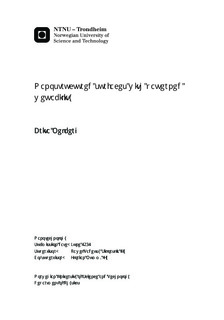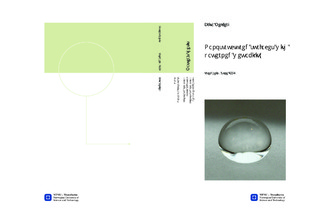| dc.description.abstract | This project aims at the fabrication of a rough polydimethylsiloxane(PDMS) surface with patterned smooth areas. The idea is that such a surface will allow for water capturing on the smooth areas of the surface. The applications for this kind of surface are many, but especially the prospects of a surface able to trap droplets of cells in suspension by simply dipping the surface into the suspension is intriguing.From a previous project[1], and another student s master s thesis[2], the use of an etched copper surface seemed promising for the fabrication of a rough mold. This was abandoned after sandpaper turned out to be an even better mold, giving superhydrophobic PDMS(162, 33 ± 1, 40degrees).The negative photoresist SU-8 5 was used to pattern the sandpaper with small, circular features on the P1000 sandpaper(400μm and 1mm in diameter). The PDMS replica from this mold was a rough surface with smooth wells. This was not able to capture water droplets effectively, partly because air bubbles were trapped in the wells during the immersion in water. To avoid this, another mold was procured by the silanization of the previously made PDMS surface. The PDMS replica of the silanized PDMS had smooth pillars instead of wells, and did not succeed in trapping water droplets either. In fact, the smooth wells seemed to better at capturing the water.This project has succeeded in producing high enough roughness on PDMS to alter the contact angle with water by ∼ 61 degrees to a contact angle exceeding the lower limit for superhydrophobic surfaces by ∼ 12 degrees. The use of a sandpaper mold has proven to is simple, inexpensive and effective at producing PDMS with high contact angles. | nb_NO |

